DISCUSSION PANELISTS
ETHICS AND GENEALOGY
Evelyn Flores, PhD
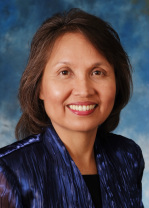
Evelyn is a Professor of English with the University of Guam. She specializes in 19th-century American Literature, Pacific Island Literature, and Postcolonial Theory. She has published three indigenous children's books, two of them featuring young girls as main characters. Recently, she completed a photo genealogy of a Chamoru family central to a crucial event in the Americanization of Guam, the break of key spiritual leaders from the Catholic Church in the 19th century precipitated by the coming of American whalers to the island.
Pale Eric Forbes, OFM Cap
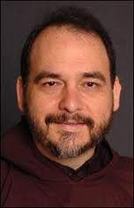
Pale Eric Forbes, OFM Cap., earned a BA in history at San Francisco State University in 1984. He earned his masters of divinity in 1990 from the Graduate Theological Union in Berkeley, California. He has also taken post-graduate courses in pastoral counseling at Creighton University in Omaha, Nebraska and Franciscan studies at St. Bonaventure University in Olean, New York.
Forbes is a Capuchin priest for Guam and Hawaii. Born and raised on Guam, he graduated from Father Duenas Memorial School in 1980. Forbes entered the Capuchin Franciscan Order in 1984 and was ordained a Catholic priest in 1990. He was previously a pastor on Guam and Saipan, the vocation and formation director for the Capuchin Order and the Capuchin superior for Guam and Hawaii.
He is also a columnist for the Pacific Daily News and a contributor in Guam History : Perspectives, Vol 1 (Mangilao, GU: MARC). Forbes authored Historia de la Mision de Guam de los Capuchinos Espanoles (Pamplona, Spain : Curia Provincial de Capuchinos, 2001) as well as, The German Capuchins in the Marianas 1907-1919 (2007: Capuchin Friars, Guam). His most recent publication is Pale’ Roman (2009 : Capuchin Friars, Guam).
Because he is a priest, Pale' Eric was given access to private sacramental records on Guam and Saipan which enabled him to construct family lineage histories for many families. He still prays each day that the Hagatna sacramental records will mysteriously be discovered in some archive abroad or in a hidden bokkongo on Guam.
Forbes is a Capuchin priest for Guam and Hawaii. Born and raised on Guam, he graduated from Father Duenas Memorial School in 1980. Forbes entered the Capuchin Franciscan Order in 1984 and was ordained a Catholic priest in 1990. He was previously a pastor on Guam and Saipan, the vocation and formation director for the Capuchin Order and the Capuchin superior for Guam and Hawaii.
He is also a columnist for the Pacific Daily News and a contributor in Guam History : Perspectives, Vol 1 (Mangilao, GU: MARC). Forbes authored Historia de la Mision de Guam de los Capuchinos Espanoles (Pamplona, Spain : Curia Provincial de Capuchinos, 2001) as well as, The German Capuchins in the Marianas 1907-1919 (2007: Capuchin Friars, Guam). His most recent publication is Pale’ Roman (2009 : Capuchin Friars, Guam).
Because he is a priest, Pale' Eric was given access to private sacramental records on Guam and Saipan which enabled him to construct family lineage histories for many families. He still prays each day that the Hagatna sacramental records will mysteriously be discovered in some archive abroad or in a hidden bokkongo on Guam.
Herman Guerrero, BA
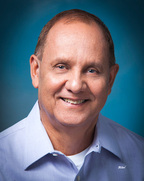
Herman Guerrero also known as “Jun Pan” is a civic leader, businessman, historian and genealogist. His interest in genealogy began years ago with the Camacho family reunion in Saipan. By 1990 he decided that it was possible to chart the genealogy of the entire Commonwealth of the Northern Mariana Islands. This was no easy feat! Through his tenaciousness and skill, he was successful with gaining access to church, government and private records. His tireless efforts paid off and he can now boast a massive database of information on NMI genealogy. He continues to update his database which he sees as a lifetime project. Herman is also an avid contributor and supporter of the Chamorro Roots Genealogy project, the NMI Humanities Council, Guampedia and numerous other historical, genealogical and cultural projects. He is currently a member of the Northern Mariana Islands Board of Education. He holds a B.A. in Sociology from St. John’s University in Minnesota and graduate work in Educational Leadership at the University of West Florida. Herman was awarded the National Humanities Award in 2002 by then President Bill Clinton for working the field of history and cultural preservation through the CNMI Museum of History and Culture.
Anthony L.G. Ramirez
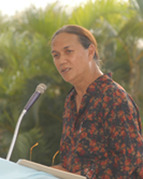
Hafa Adai:
I am Toni Ramirez, a CHamoru and a resident of Guam. I was born in 1951. I have lived on Guam most of life. Since 1967, I have devoted most of my life to CHmaoru Studies one of which is CHamoru Genealogy.
In 1982, I began writing a series of 24 articles titled “La Sangri Yama” which means the “The Blood Calls. Briefly, the series, published in the Guam Tribune, is about my family lineage of twenty-four surnames dating as early as the 17th century.
When I actively began my research on CHamoru genealogy, I never realized that genealogical research only has a beginning. The account never ends and till today I am still gathering information. Truly, it is a lifetime research.
Si Yu’us Ma’asi’
I am Toni Ramirez, a CHamoru and a resident of Guam. I was born in 1951. I have lived on Guam most of life. Since 1967, I have devoted most of my life to CHmaoru Studies one of which is CHamoru Genealogy.
In 1982, I began writing a series of 24 articles titled “La Sangri Yama” which means the “The Blood Calls. Briefly, the series, published in the Guam Tribune, is about my family lineage of twenty-four surnames dating as early as the 17th century.
When I actively began my research on CHamoru genealogy, I never realized that genealogical research only has a beginning. The account never ends and till today I am still gathering information. Truly, it is a lifetime research.
Si Yu’us Ma’asi’
Monique Storie, PhD
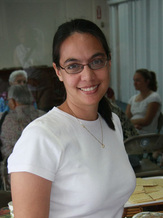
Monique R.C. Storie earned a BS in Spanish from Arizona State University, an MA in library science from the University of Arizona and a PhD in language, reading and culture also from the University of Arizona. Dr. Storie has worked at the Richard Flores Taitano Micronesian Area
Research Center since 1995, serving as the Guam and Micronesia Reference Collection librarian and more recently as interim director. She helped to restart MARC's Familian Chamorro Genealogy Program, which began in the early 1980s with MARC librarians, including the late Al Williams.
Research Center since 1995, serving as the Guam and Micronesia Reference Collection librarian and more recently as interim director. She helped to restart MARC's Familian Chamorro Genealogy Program, which began in the early 1980s with MARC librarians, including the late Al Williams.
INTERPRETATION OF HISTORY
Baltazar B. Aguon, MFA
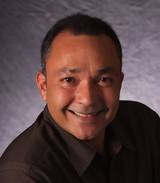
Baltazar B. Aguon received a Master of Fine Arts in Screenwriting from the American Film Institute’s Center for Advanced Film and Television Studies, and a Bachelor of Arts in Communications from the University of Guam. His film credits include: Gueran Guahan, a documentary about Guam from WWII to present (co-producer); I Tinituhon: Puntan yan Fu’una, a depiction of the Creation of Guam and the indigenous people of the island(co-producer/co-director); Måtto Saina’ta as Hurao, a one-minute experimental film about the return of a powerful, ancient chief to modern day Guam (writer); and Prutehi Hao I, a youth-oriented HIV prevention video (Executive Producer). Aguon is also the author of I Dos Amantes, a short story based on the Guam legend of the Two Lovers, has written articles for local magazines, and was awarded Best Editorial in the 3rd Guam Annual Media Awardsfor his entry “Why Celebrate Discovery Day?” He scripted, stage-managed, designed and constructed sets for the Opening and Closing Ceremonies of the XI South Pacific Games, and the Guam leg of the 2000 Sidney Olympic Torch Relay & Lighting Ceremony. His acting experience includes principal roles in DRACULA (Jonathan Harker), JESUS CHRIST SUPERSTAR (Pontius Pilate), and The Normal Heart (Ben Weeks). Aguon teaches Communications at the University of Guam, and is a producer for PBS Guam.
Michael Bevacqua, PhD
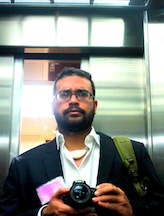
Michael Lujan Bevacqua is a professor in Chamorro Studies at the University of Guam and a local artist, writer and activist. His research deals with the effects of colonization on Chamorros and theorizing the possibilities for their decolonization. He is a passionate advocate for the revitalization of the Chamorro language and has held free weekly classes since 2010. He writes a weekly column in The Marianas Variety titled “When the Moon Waxes” and is a co-host for the KPRG show Beyond the Fence. In 2011 he led a faculty task force in establishing a historic Chamorro Studies program. He blogs regularly at No Rest for the Awake – Minagahet Chamorro.
Guaha dos patgon-ña, Si Sumåhi (6) yan Si Akli’e’ (4) ya kada diha ha Fino’ Chamoruruyi siha.
Guaha dos patgon-ña, Si Sumåhi (6) yan Si Akli’e’ (4) ya kada diha ha Fino’ Chamoruruyi siha.
Judy Flores, PhD
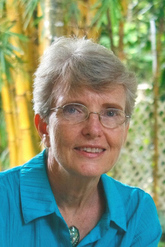
Judy Flores, PhD, is a folklorist, historian, teacher, and visual artist who has lived and worked in the island of Guam since 1957. A child of schoolteachers, she grew up in the southern village of Inarajan, and speaks fluent Chamorro. She earned a BA from the University of Guam and an MA from the University of Washington. She taught secondary school art for 10 years, then served as folklorist for the Guam arts council for another 10 years. She helped found Gef Pa’go, Guam’s only living museum of Chamorro culture; serving successively as advisor, director and president over a 20-year period. She earned a second MA in Micronesian Studies from the University of Guam; and PhD in Arts of Oceania from the University of East Anglia in Norwich, England. She returned to teach at the University of Guam, from which she retired in 2005.
She is widely recognized as a professional visual artist of batik paintings that depict Guam’s culture and history that can be seen in many of Guam’s public buildings; including her most recent commission for the new Guam Regional Medical City. In 2011, she published Estorian Inalahan: History of a Spanish-Era Village in Guam. She is currently in the process of restoring an early-1900s building in Inarajan historic district, to house a history center.
She is widely recognized as a professional visual artist of batik paintings that depict Guam’s culture and history that can be seen in many of Guam’s public buildings; including her most recent commission for the new Guam Regional Medical City. In 2011, she published Estorian Inalahan: History of a Spanish-Era Village in Guam. She is currently in the process of restoring an early-1900s building in Inarajan historic district, to house a history center.
IDENTITY AND HISTORY
David Atienza, PhD

David received a Ph.D. in Anthropology from the Complutense University of Madrid in 2006. He has taught history, philosophy, anthropology and applied linguistics at different institutions and universities in Spain. Dr. Atienza's research interests are focused on Cultural Identity Processes, Speech Analysis, and Linguistic Anthropology. He had authored several publications, among there are his book, "Viaje e Identidad: La Genesis de la Elite Quichwa-Otavalena en Madrid", that was a product of fieldwork conducted in Otavalo, Ecuador and Spain and his latest article together with Alexander Coello in The Journal of Pacific History: "Death Rituals and Identity in Contemporary Guam (Mariana Islands)". Currently he is assistant professor of Anthropology at the University of Guam.
Carlos Madrid, PhD
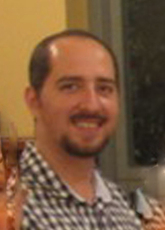
Carlos is a Researcher & Assistant Professor with the RFT Micronesian Area Research Center, University of Guam. He holds a Masters Degree in History from the Universidad Complutense de Madrid (2001); a Master's Degree, Diploma de Estudio Avanzados, and a Ph.D. in Contemporary History from the Universidad Complutense de Madrid. Carlos is very familiar with Guam’s Spanish history. He is an expert on Spanish colonial records as they pertain to the Marianas, not only held in Guam, but in the NMI, Philippines and Spain. He is the author of a scholarly book about Guam entitled, “Beyond Distances: Governance, Politics and Deportation in the Mariana Islands from 1870 to 1877.” He is professionally very interested in the question of emigration from Guam.
Anthony Ramirez
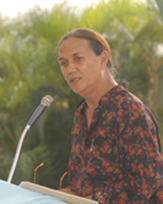
Hafa Adai:
I am Toni Ramirez, a CHamoru and a resident of Guam. I was born in 1951. I have lived on Guam most of life. Since 1967, I have devoted most of my life to CHmaoru Studies one of which is CHamoru Genealogy.
In 1982, I began writing a series of 24 articles titled “La Sangri Yama” which means the “The Blood Calls. Briefly, the series, published in the Guam Tribune, is about my family lineage of twenty-four surnames dating as early as the 17th century.
When I actively began my research on CHamoru genealogy, I never realized that genealogical research only has a beginning. The account never ends and till today I am still gathering information. Truly, it is a lifetime research.
Si Yu’us Ma’asi’
I am Toni Ramirez, a CHamoru and a resident of Guam. I was born in 1951. I have lived on Guam most of life. Since 1967, I have devoted most of my life to CHmaoru Studies one of which is CHamoru Genealogy.
In 1982, I began writing a series of 24 articles titled “La Sangri Yama” which means the “The Blood Calls. Briefly, the series, published in the Guam Tribune, is about my family lineage of twenty-four surnames dating as early as the 17th century.
When I actively began my research on CHamoru genealogy, I never realized that genealogical research only has a beginning. The account never ends and till today I am still gathering information. Truly, it is a lifetime research.
Si Yu’us Ma’asi’
Robert Underwood, PhD
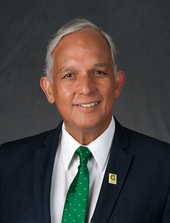
The Honorable Robert Underwood is a former Member of the U.S. Congress and is currently the President of the University of Guam. As an educator, he has served as Academic Vice President at the University of Guam and he is a distinguished scholar with many publications to his credit. He served as the Congressional Delegate from Guam in the 103-107th Congresses (1993-2003) during which he sponsored major legislation for Guam, played an active role in Department of Defense authorization bills and was a forceful advocate for political development for insular areas and the extension of educational and social opportunities for Asian Americans and Pacific Islanders.
During his tenure in Congress, he became a senior member of both the House Armed Services and Resources Committees. He was ranking member for several subcommittees. He emphasized the importance of Guam and Asian Pacific Region in national strategic policy and worked to enhance the benefits of military personnel, especially those in Guard and Reserve units. He also worked to protect the nation’s environmental assets, particularly the oceans and coral reefs.
He passed major legislation for Guam that resolved long standing land disputes with the federal government (P.L. 103-339, P.L. 106-504), brought recognition to Guam’s World War II generation and their case for war claims (P.L. 103-197, P.L. 107-333) and enhanced local autonomy (P.L. 105-209- delegate ballot bill; P.L. 105-291 – elected attorney general; P.L. 105-618 – magistrate bill). Additionally, he built a successful record of bringing in federal funds for military construction, assistance to the Government of Guam due to in-migration from surrounding islands and for several education programs.
He ensured Guam’s inclusion in major legislation such as the Telecommunications Act of 1996 that brought domestic telephone rates to Pacific territories, the State Children Health Insurance Program and the bill that established the Department of Homeland Security. He brought recognition to Guam’s unique people by lifting the ban on betel nut importation into the U.S. Customs Zone, inclusion in the national World War II memorial, the creation of Chamorro Standard Time and participation in national commemorative events.
As a member of the Hispanic and Asian Pacific American caucuses, he spoke out for the protection of immigrant rights, educational opportunities and sensitivity to language issues. As Chairman of the Congressional Asian Pacific American Caucus in the 106th Congress, he led the effort to include Asian Pacific Americans in scholarship programs, was instrumental in the development of the White House Initiative on Asian Americans and Pacific islanders, spoke out against racial profiling and for including Pacific Islanders as a demographic category in federal programs.
In recognition for his efforts in building good relations in the Pacific, he received a Presidential Merit Award from President Gloria Arroyo of the Philippines and congratulatory resolutions from the Pohnpei, FSM and Northern Marianas Legislatures. He has also been honored by several national Asian Pacific American organizations and was named citizen of the year by the National Association of Bilingual Education in 1996, Alumnus of the Year by Cal State University Los Angeles
Robert was born in Guam (1948) and educated in Guam and California. He graduated from John F. Kennedy High School in Guam (1965) and received a Bachelor’s (1969) and Masters Degree (1971) from Cal State University, Los Angeles. He holds a Doctor of Education degree from the University of Southern California. He was a classroom teacher, curriculum writer and administrator in the Guam schools and was elected to the Guam Territorial Board of Education in 1978.
As a teacher and Professor of Education at the University of Guam, he led the effort to include the Chamorro language and culture in the curriculum of Guam’s schools and enhance multicultural understanding. He was appointed to the National Advisory Council on Bilingual Education during President Carter’s administration. At the University of Guam, he ran a multi-million, regional education center for the Micronesian Region, served as Dean of the College of Education and as Academic Vice President. He also served as Chairman of the Chamorro Language Commission for over a decade and is widely acknowledged as a leading authority on cultural, educational and linguistic issues in Guam and Micronesia. He was awarded a lifetime achievement award by the Guam Humanities Council and is the only Professor Emeritus of Bilingual-Bicultural Education of the University of Guam.
He participated in the effort to create the national Asian Pacific Islander American Scholarship Fund and was elected to be the APIASF’s first Chair of the Board of Trustees. He has worked on several research projects with the East West Center and the Asian Pacific Center for Security Studies and taught courses at the University of Guam prior to his selection as the 10th President of the University of Guam in 2008.
Since becoming President of the University, in 2008, he has helped reposition the University as the "natural choice" for thousands of young people in Guam and the Micronesian Region. He has significantly increased federal funding to the University and led the effort for a UOG Green university. He eagerly embraces the challenge of helping island communities take on issues related to change and building a sustainable future that continues our essence as islanders, protects our islands and oceans and builds strong societies and economies.
During his tenure in Congress, he became a senior member of both the House Armed Services and Resources Committees. He was ranking member for several subcommittees. He emphasized the importance of Guam and Asian Pacific Region in national strategic policy and worked to enhance the benefits of military personnel, especially those in Guard and Reserve units. He also worked to protect the nation’s environmental assets, particularly the oceans and coral reefs.
He passed major legislation for Guam that resolved long standing land disputes with the federal government (P.L. 103-339, P.L. 106-504), brought recognition to Guam’s World War II generation and their case for war claims (P.L. 103-197, P.L. 107-333) and enhanced local autonomy (P.L. 105-209- delegate ballot bill; P.L. 105-291 – elected attorney general; P.L. 105-618 – magistrate bill). Additionally, he built a successful record of bringing in federal funds for military construction, assistance to the Government of Guam due to in-migration from surrounding islands and for several education programs.
He ensured Guam’s inclusion in major legislation such as the Telecommunications Act of 1996 that brought domestic telephone rates to Pacific territories, the State Children Health Insurance Program and the bill that established the Department of Homeland Security. He brought recognition to Guam’s unique people by lifting the ban on betel nut importation into the U.S. Customs Zone, inclusion in the national World War II memorial, the creation of Chamorro Standard Time and participation in national commemorative events.
As a member of the Hispanic and Asian Pacific American caucuses, he spoke out for the protection of immigrant rights, educational opportunities and sensitivity to language issues. As Chairman of the Congressional Asian Pacific American Caucus in the 106th Congress, he led the effort to include Asian Pacific Americans in scholarship programs, was instrumental in the development of the White House Initiative on Asian Americans and Pacific islanders, spoke out against racial profiling and for including Pacific Islanders as a demographic category in federal programs.
In recognition for his efforts in building good relations in the Pacific, he received a Presidential Merit Award from President Gloria Arroyo of the Philippines and congratulatory resolutions from the Pohnpei, FSM and Northern Marianas Legislatures. He has also been honored by several national Asian Pacific American organizations and was named citizen of the year by the National Association of Bilingual Education in 1996, Alumnus of the Year by Cal State University Los Angeles
Robert was born in Guam (1948) and educated in Guam and California. He graduated from John F. Kennedy High School in Guam (1965) and received a Bachelor’s (1969) and Masters Degree (1971) from Cal State University, Los Angeles. He holds a Doctor of Education degree from the University of Southern California. He was a classroom teacher, curriculum writer and administrator in the Guam schools and was elected to the Guam Territorial Board of Education in 1978.
As a teacher and Professor of Education at the University of Guam, he led the effort to include the Chamorro language and culture in the curriculum of Guam’s schools and enhance multicultural understanding. He was appointed to the National Advisory Council on Bilingual Education during President Carter’s administration. At the University of Guam, he ran a multi-million, regional education center for the Micronesian Region, served as Dean of the College of Education and as Academic Vice President. He also served as Chairman of the Chamorro Language Commission for over a decade and is widely acknowledged as a leading authority on cultural, educational and linguistic issues in Guam and Micronesia. He was awarded a lifetime achievement award by the Guam Humanities Council and is the only Professor Emeritus of Bilingual-Bicultural Education of the University of Guam.
He participated in the effort to create the national Asian Pacific Islander American Scholarship Fund and was elected to be the APIASF’s first Chair of the Board of Trustees. He has worked on several research projects with the East West Center and the Asian Pacific Center for Security Studies and taught courses at the University of Guam prior to his selection as the 10th President of the University of Guam in 2008.
Since becoming President of the University, in 2008, he has helped reposition the University as the "natural choice" for thousands of young people in Guam and the Micronesian Region. He has significantly increased federal funding to the University and led the effort for a UOG Green university. He eagerly embraces the challenge of helping island communities take on issues related to change and building a sustainable future that continues our essence as islanders, protects our islands and oceans and builds strong societies and economies.